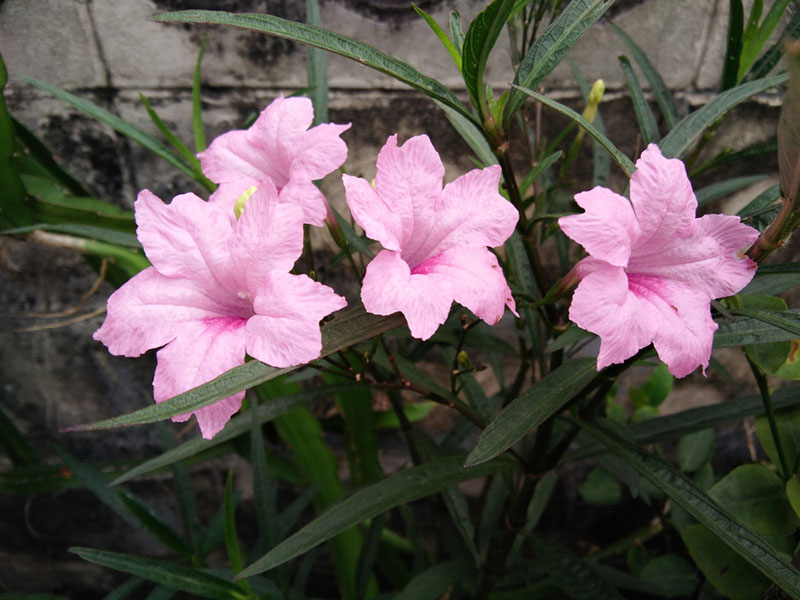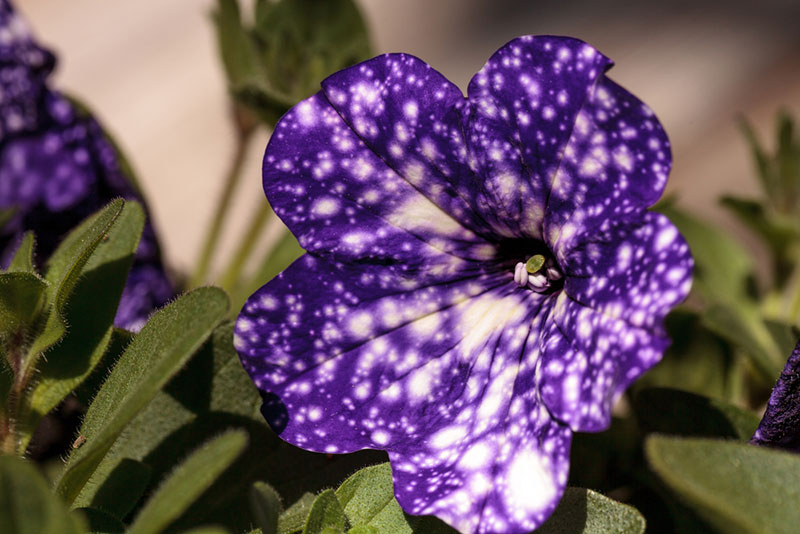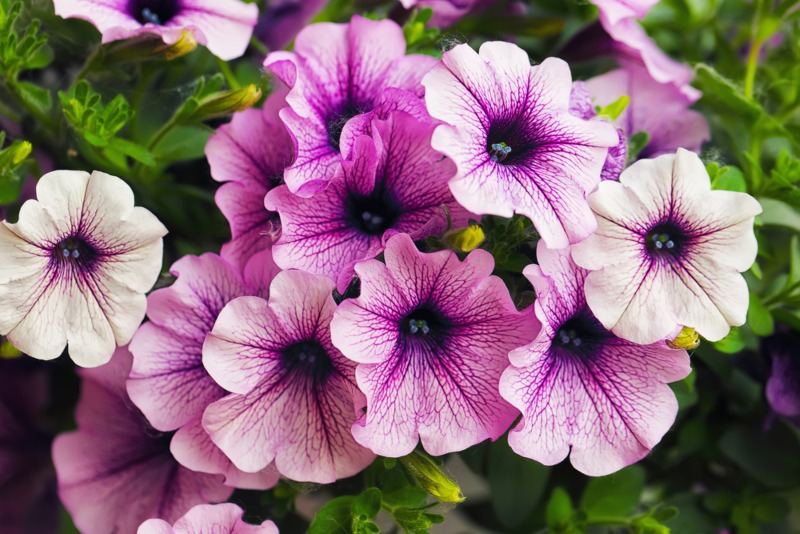
The dwarf Mexican petunia is a small plant that is perfect for ground cover.
It’s a hardy plant that be grown in zones 8 to 11. With some care to protect it in the winter, it will also survive zone 7.
In warm locations with plenty of sun, it will bloom throughout the year.
In areas with frost, it will bloom during the warmer months. The leaves look a little like grass and the flowers that bloom in the center of the plant come in white, pink, and purple. It grows to a height of between 8 and 10 inches.
Light and Temperature Requirements
This plant will thrive in full sunlight but will also tolerate partial shade. When this plant’s shoots start fighting each other for light, trim back the older ones and let the new shoots thrive. Otherwise, the plant can get leggy. The temperature doesn’t have an upper limit. It loves the sun and hot temperatures. In the winter, it will tolerate temperatures down to 25 degrees F. In some, colder areas, the plant may go dormant in the winter, but it comes back in the warmth of the springtime. In colder temperatures, its leaves can take on a reddish look.
Watering
Though this plant is considered drought-tolerant, it actually prefers to be wet. It’s love of water runs so deep that it can survive in areas that drain poorly. It is even salt tolerant. It likes regular watering best. It will tolerate droughts, but it will grow better if it is watered regularly. There is no need to wait for the soil to fully dry out between waterings. It is fungus resistant.
Soil
When planting the dwarf Mexican petunia, add some topsoil into the mix or peat moss or potting soil. This will allow the soil to hold on the water so that the roots can access it. In spring and summer, fertilize the soil with a good slow-release fertilizer. They like well-drained soil best, but they will grow in wet, marshy soil as well. They can be planted close to lakes, rivers and the ocean. The soil should be neutral to a little acidic for the best results, though they will tolerate alkaline soil.
Propagation
Plant these dwarf plants about 2 feet apart for the best results. They are highly resistant to both diseases and pests, so they need little care as long as they get enough water and sun. These plants grow both by spreading seeds and through rhizomes underground. They can get invasive if they are planted in areas where they can spread out and keep spreading their seeds. In a flowerbed with mulch, they are less likely to invade the rest of the space.
Invasive
If you don’t want these plants to spread, there are a few ways to keep them from becoming invasive. Cutting out new shoots can be helpful in controlling the plant’s size. If you see any of the seeds of this plant around it, pick them up and dispose of them. Planting them next to a concrete or brick divider in your flower bed can help rein them in.






